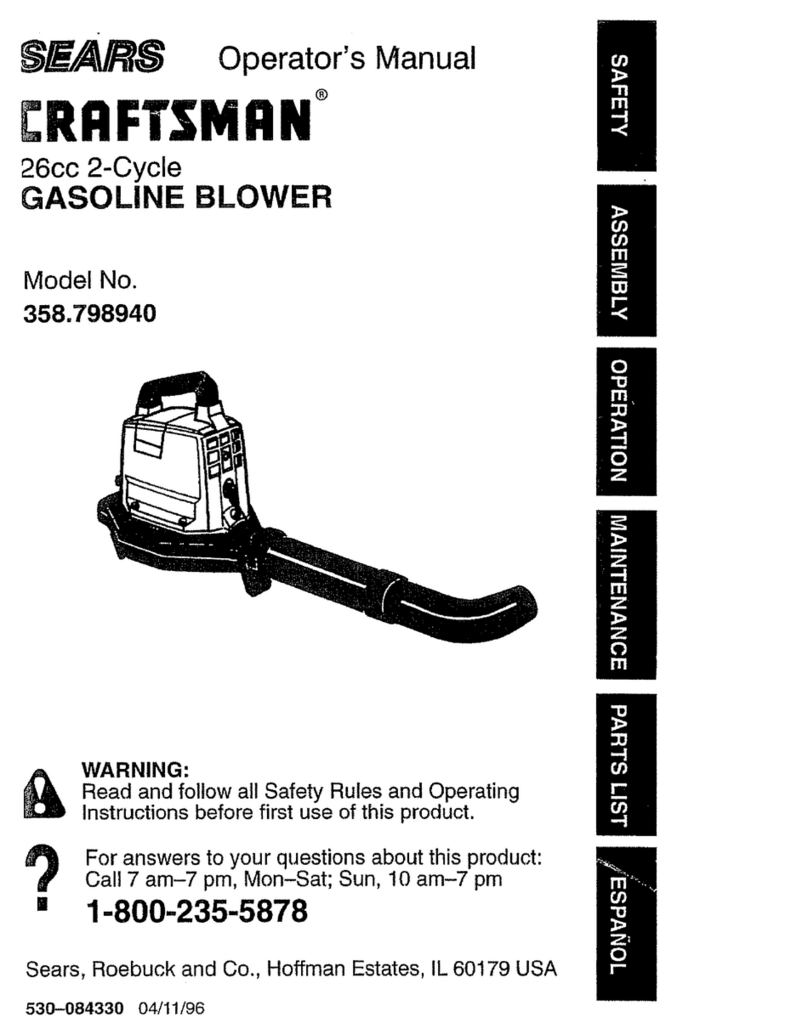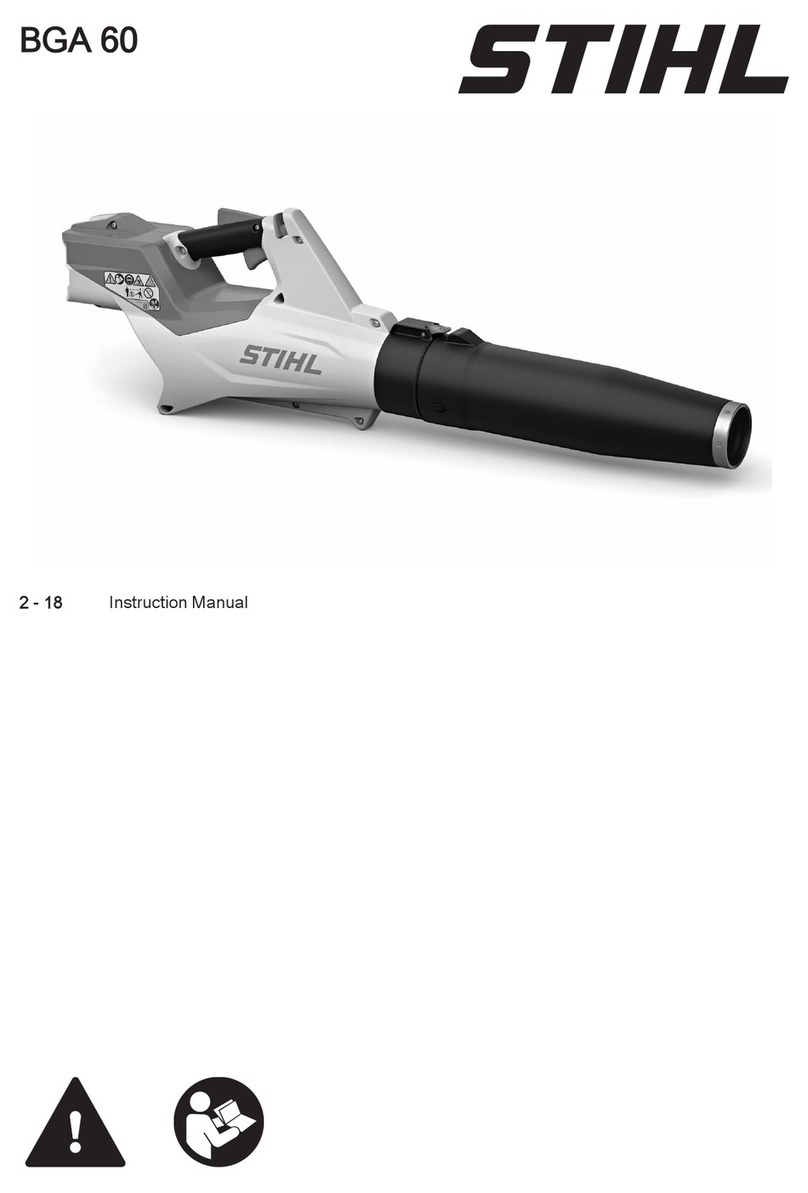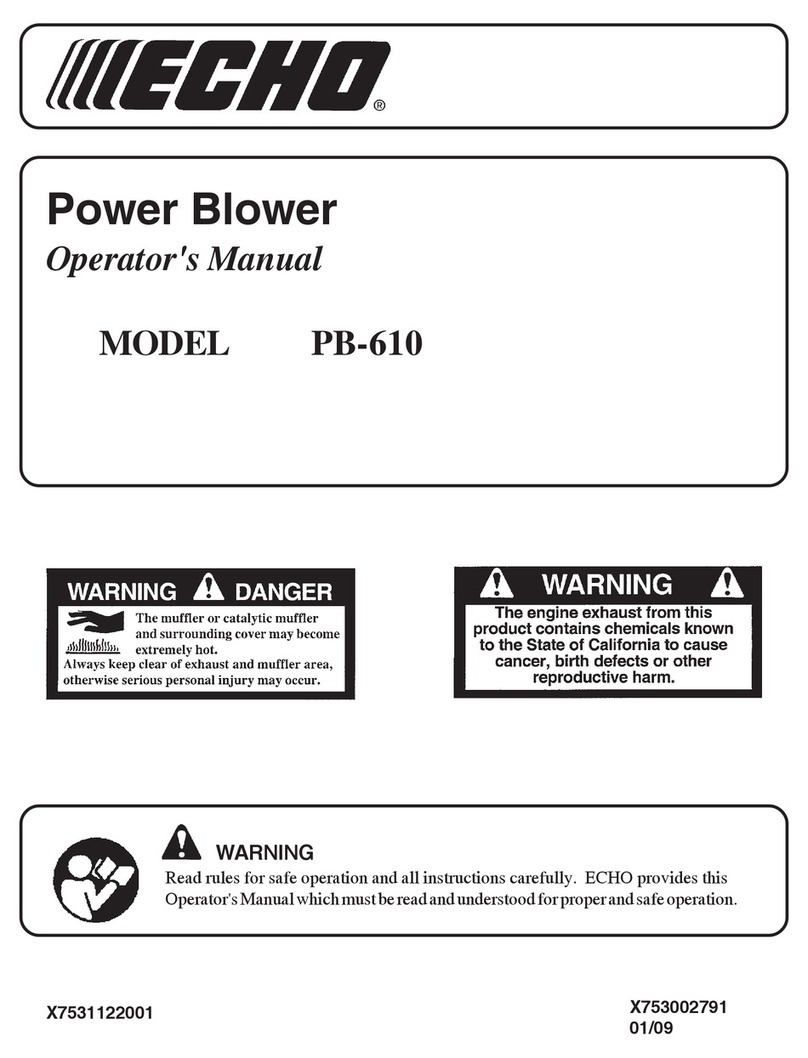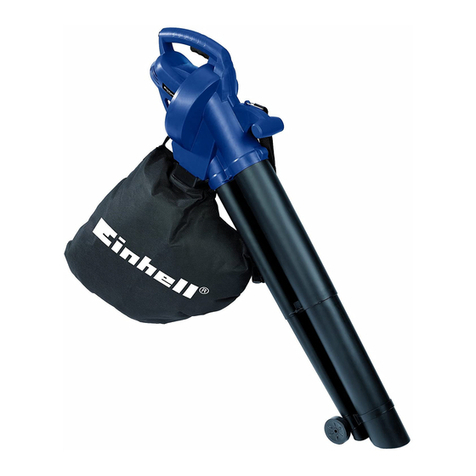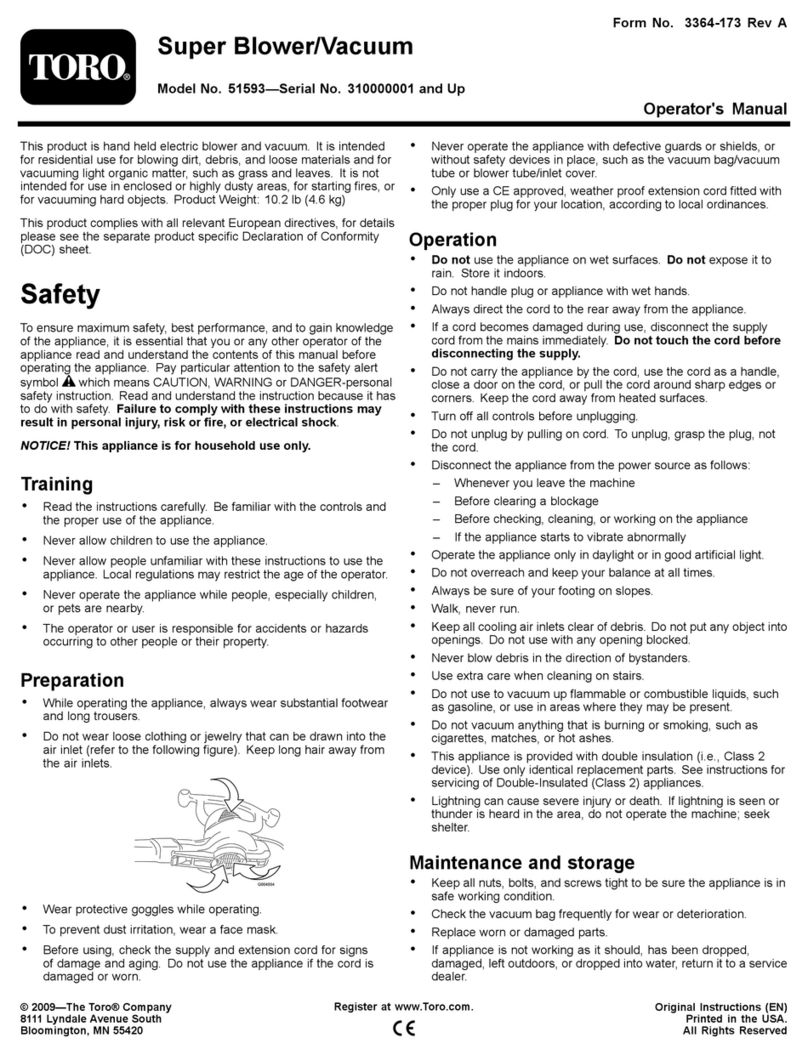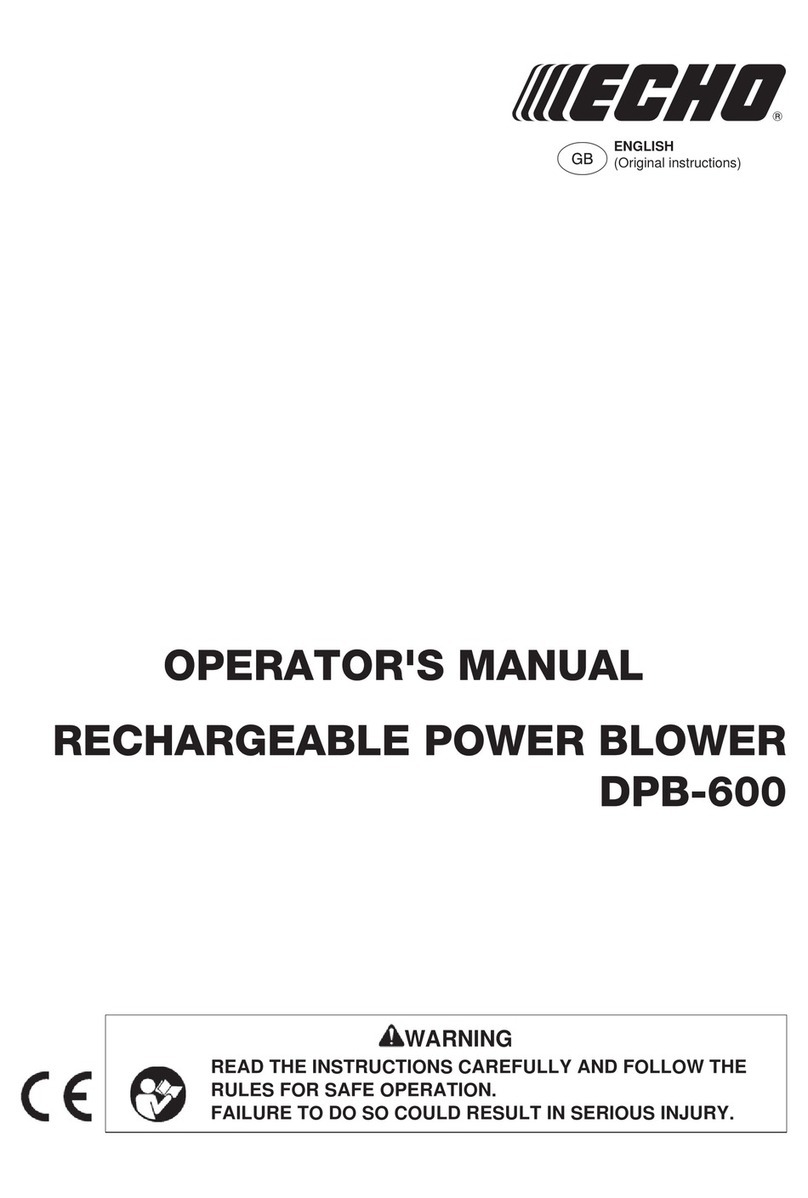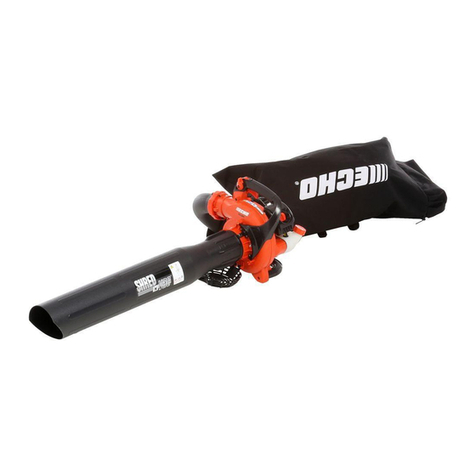Nitehawk RAPTOR II User manual

RAPTOR II
OWNERS MANUAL

2
1 GENERAL INFORMATION
ABOUT YOUR SWEEPER / HOW TO USE MANUAL 3
2 SAFETY
SAFETY STAND USE 4
SAFETY DECALS –IMAGES AND LOCATIONS 5
REPLACEMENT PARTS 6
SAFETY INSTRUCTIONS AND PRACTICES
GENERAL 7
OPERATOR 9
MAINTENANCE 17
LAWS AND REGULATIONS 22
3 SWEEPER SYSTEM DESCRIPTIONS & INDENTIFICATION
PART AND SYSTEM IDENTIFICATION AND LOCATION
- SWEEPER COMPONENTS 24
- HYDRAULIC SYSTEM 27
- OPTIONAL EQUIPMENT (Curb Broom / Water System) 33
4 OPERATING PROCEDURES
CONTROLS AND OPERATION 36
SAFETY & LIGHTING 38
VIDEO RESOURCES FOR OPERATING SWEEPER 38
5 SERVICE AND MAINTENANCE
DAILY INSPECTION 39
SWEEPER MAINTENANCE SCHEDULE 40
ANNUAL MAINTENANCE 41
SERVICE & ADJUSTMENT GUIDES 44
REPAIRS & TROUBLESHOOTING 54
6 SUPPLEMENTS
NITEHAWK WARRANTY SUMMARY 59
ISUZU WARRANTY SUMMARY 61
HYDRAULIC SYSTEM SCHEMATIC 62

3
1 GENERAL INFORMATION
ABOUT YOUR SWEEPER
Congratulations on the purchase of your new NiteHawk Raptor II –the newest, most powerful
and reliable sweeper on the market. Your sweeper has been designed to give you years of easy
operation and trouble free service, with only a small amount of periodic maintenance.
You can contact NiteHawk for Sales, Service and Parts in a variety of convenient ways:
Our standard business hours are Monday –Friday, 8-5 PST
Phone: 800-448-9364 253-872-2077
Email: Info@nitehawksweepers.com service@nitehawksweepers.com
Web: www.nitehawksweepers.com www.buysweeperparts.com
HOW TO USE THIS MANUAL
Please read this manual thoroughly before operating your new sweeper, and then keep it in an
accessible place for ready reference. By becoming familiar with the contents of this manual, you
will learn more about the features and controls of your sweeper. For digital copies of this manual,
please contact your NiteHawk rep

4
2 SAFETY
SAFETY STAND USE
Your NiteHawk Sweeper comes from the factory with a Hopper Safety Stand.
Never work under a raised hopper without a safety stand
Always remove safety stand before lowering hopper or it may cause damage
The stand must be used any time a person is working with the hopper in a raised position. Install
the stand on one of the dump cylinders, accessing from behind the sweeper, and always secure
the locking arm.
To assist owners and maintenance personal with
proper use of the hopper safety stand, please go
to the following link on the NiteHawk Sweepers
YouTube channel:
https://www.youtube.com/watch?v=2pZd0rp72zg
Safety stands can be replaced by ordering via
our Parts and Service Department, or online at
buysweeperparts.com

5
SAFETY DECALS –IMAGES AND LOCATION

6
REPLACEMENT PARTS
NiteHawk Sweepers use balanced and matched system components for the entire
sweeper system. These parts are made and tested to NiteHawk specifications.
Non-genuine or “will fit” parts do not consistently meet these specificati ons. The
use of non-genuine or “will fit” parts may reduce Sweeper perform ance, void
Sweeper warranties, and present a safety hazard. Use genuine NiteHawk Sweeper
parts for economy and safety. (SPNHG-01)

7
GENERAL SAFETY INSTRUCTIONS AND PRACTICES
A careful operator is the best operator. Safety is of primary importance to the manufacturer and
should be to the owner/operator. Most accidents can be avoided by being aware of your
equipment, your surroundings, and observing certain precautions. The first section of this manual
includes a list of Safety Messages that, if followed, will help protect the operator and bystanders
from injury or death. Read and understand these Safety Messages before assembling, operating
or servicing this Implement. This equipment should only be operated by those persons who have
read the Manual, who are responsible and trained, and who know how to do so responsibly.
The Safety Alert Symbol combined with a Signal Word, as seen below, is used
throughout this manual and on decals which are attached to the equipment. The
Safety Alert Symbol means: “ATTENTION! BECOME ALERT! YOUR SAFETY IS
INVOLVED!” The Symbol and Signal Word are intended to warn the owner/operator
of impending hazards and the degree of possible injury faced when operating this equipment.
Indicates an imminently hazardous situation that, if not avoided, WILL result in
DEATH OR VERY SERIOUS INJURY.
Indicates an imminently hazardous situation that, if not avoided, COULD result
in DEATH OR SERIOUS INJURY.
Indicates an imminently hazardous situation that, if not avoided, MAY result in
MINOR INJURY.
Identifies special instructions or procedures that, if not strictly observed, could
result in damage to, or destruction of the machine, or the environment.
NOTE: Identifies points of particular interest for more efficient and convenient
operation or repair.
Practice all usual and customary safe working precautions and
above all---remember safety is up to YOU. Only YOU can prevent
serious injury or death from unsafe practices.

8
READ, UNDERSTAND, and FOLLOW the following Safety Messages. Serious injury or
death may occur unless care is taken to follow the warnings and instructions stated in the
Safety Messages. Always use good common sense to avoid hazards.
Si no lee ingles, pida ayuda a alguien que si lo lea para que le traduzca las
medidas de seguridad.
Never operate the Sweeper until you have read and completely understand
this manual, the Truck Operator’s Manual, and each of the Safety Messages
found in these manuals and those affixed to the Sweeper and its components. Learn how to
stop the Sweeper’s engines suddenly in an emergency. Never allow inexperienced or untrained
personnel to operate the Truck and Sweeper without supervision. Make sure the operator
has fully read and understood the manuals prior to operation.
In addition to the design and configuration of this Sweeper, including Safety Signs and Safety
Equipment, hazard control and accident prevention are dependent upon the awareness, concern,
prudence, and proper training of personnel involved in the operation, transport, maintenance, and
storage of the machine. Refer also to Safety Messages and operation instruction in each of the
appropriate sections of the Truck and Auxiliary Engine Manuals. Pay close attention to the Safety
Signs affixed to the Sweeper.
Always maintain the safety decals in good readable condition. If the decals are
missing, damaged, or unreadable, obtain and install replacement decals
immediately. Consult your authorized sales representative for decal replacements
All Safety Shields, Guards and other Protective Safety devices should be used
and maintained in good working condition. All safety devices should be
inspected carefully at least daily for missing or broken components. NEVER REMOVE
PROTECTIVE SHIELDS AND GUARDS! NEVER MODIFY OR CUT PROTECTIVE SHIELDS
OR GUARDS! When shields or guards are removed to access areas for maintenance, they must
be replaced and be in good condition before operating. Missing, broken, or worn shields, guards,
and other protective devices must be replaced at once and prior to operation to reduce the
possibility of injury or death from thrown objects, entanglement, or contact. The Sweeper must be
equipped with a fire extinguisher, rated for all fires, in an accessible and visible area. The fire
extinguisher should be inspected routinely by a certified inspector for operational use and
replaced as needed. Never obstruct access to the fire extinguisher.

9
OPERATOR SAFETY INSTRUCTIONS AND PRACTICES
The operator of the Sweeper must be trained in the operation and safe use of
this machine. The operator must read and completely understand the
operator’s manuals of the Sweeper, Truck engine manufacturers. New operators should be
trained in an open area clear of obstructions before operating on public roadways. If
operation of the entire Sweeper unit (Truck and Sweeping Components) is not completely
understood, consult your authorized sales representative for a detailed explanation. Never allow
an untrained or unqualified driver to operate the Sweeper.
The Sweeper driver must meet the requirements and possess a Motor Vehicle
License as determined by the state in which the Sweeper is operated if used
on public roadways. Contact your local State Department of Public Safety office for special
licensing requirements to operate the Sweeper in your area.
NEVER use drugs or alcohol immediately before or while driving or
operating the Sweeper. Drugs and alcohol will affect an operator’s alertness
and coordination and therefore affect the operator’s ability to operate the Sweeper safely.
Before operating the Sweeper, an operator on prescription or over-the-counter
medication must consult a medical professional regarding any side effects of the
medication that would hinder their ability to operate the Sweeper safely. NEVER
knowingly allow anyone to operate this Sweeper when their alertness or coordination is
impaired. Serious injury or death to the operator or others could result if the
operator is under the influence of drugs or alcohol.
Always wear OSHA approved Personal Protective Equipment (PPE) while
operating, servicing, repairing, and/or cleaning the Sweeper. PPE is designed
to provide bodily protection during such activities.
Personal Protective Equipment includes:
Protective Eye Wear
Steel Toed Safety Footwear
Gloves
Hearing Protection
Close Fitted Clothing
Hard Hat-When working around a raised hopper.
Respirator-Depending on conditions and material being swept or cleaned.
Specialized protective equipment may be required if dangerous or hazardous material is being
swept by or cleaned from the Sweeper

10
Repeated or substantial breathing of hazardous dusts, including crystalline
silica, could cause fatal or serious respiratory disease including silicosis.
Concrete, masonry, many types of rock, and various other materials contain silica sand.
California lists respirable crystalline silica as a substance known to cause cancer. Operation of
this equipment under certain conditions may generate airborne dust particles that could contain
crystalline silica. In those conditions, personal protective equipment including an appropriate
respirator must be used. If excessive dust is generated, a dust collection or suppression system
should also be used during operation
Prolonged operation of the Sweeper may cause operator boredom and/or
fatigue affecting the safe operation of the Sweeper. It is recommended that
the operator take scheduled work breaks to help prevent these potentially impaired operating
conditions. If possible, completely shut down the Sweeper, exit the cab and move around
stretching your arms and legs. Never operate the Sweeper in a fatigued or bored mental state
that impairs proper and safe Sweeper operation
PROLONGED EXPOSURE TO LOUD NOISE MAY CAUSE PERMANENT
HEARING LOSS! Sweeper operation can often be noisy enough to cause
permanent hearing loss. We recommend that you always wear hearing protection if the noise in
the Operator’s position exceeds 80db. Noise over 85db over an extended period of time will
cause severe hearing loss. Noise over 90db adjacent to the Operator over an extended period
of time will cause permanent or total hearing loss. Note: Hearing loss from loud noise [from
sweepers, chain saws, radios, and other such sources close to the ear] is cumulative over a
lifetime without hope of natural recovery
Do not operate, or perform maintenance to, the Sweeper while wearing loose
fitting clothing. Entanglement of loose clothing with the rotating elements can
result in serious injury or death. Stay clear of all rotating elements at all times
Use both hands for support when getting on and off the Sweeper. Use
handholds and steps on the Sweeper for support when boarding the Sweeper.
Use available Sweeper handholds and steps to exit the Sweeper. Make sure
you have solid footing before stepping down. Be careful of your step and use
extra caution when mud, ice, snow, or other matter has accumulated on the steps or handrails.
Never rush to exit or jump off the Sweeper.
Do not attempt to mount the Sweeper or Truck while the machine is
moving. Never attempt to mount a runaway Sweeper. Serious
injury or death may occur from being run over by a moving Sweeper
BEFORE leaving the Truck’s seat, always engage the parking brake and/or
set the Truck’s transmission in parking gear, stop the engine, remove the key,
and wait for all moving parts to stop. Never dismount a Truck that is moving or while the Truck
and engine are running. Operate the Sweeper controls from the Truck seat only.

11
Always wear a seat belt while driving the Sweeper during operation and transport.
Serious injury or even death could result from falling out of the
Truck or from being involved in a collision.
Start the Truck and Sweeper only when seated and belted in the
Truck’s operator seat. Operate the Sweeper controls only while
properly seated with the seat belt secured around you. Inadvertent movement of
the Truck and/or Sweeper components may cause serious injury or death to
the operator and passersby. Read the Truck and Sweeper s manuals for proper
starting instructions.
Do not operate, or perform maintenance to the Sweeper while wearing loose
fitting clothing. Entanglement of loose clothing with the rotating elements can
result in serious injury or death. Stay clear of all rotating elements at all times.
Sweep only in conditions where you have clear visibility of the area being
swept in daylight or with adequate artificial lighting. Never sweep in darkness
of foggy conditions where you cannot clearly see at least 50 feet in front and to the sides of the
Sweeper. Make sure that you can clearly see and identify passersby, steep slopes, ditches, drop
offs, overhead obstructions, power lines, oversized debris and foreign objects. If you are unable
to see these types of items, discontinue sweeping until visibility improves.
Transport the Sweeper only at safe speeds. Serious accidents and injuries
can result from driving this Sweeper at unsafe speeds. Become familiar with
the driving characteristics of the Truck and how it handles before operating or transporting on
streets and highways. Make sure the Truck’s steering, brakes, and wheels are in good
condition and operate properly.
Before transporting the Sweeper determine the safe transport speeds for you and the machine.
Make sure you abide by the following rules:
1. Test the Sweeper at a slow speed and increase the speed slowly. Apply
the brakes smoothly to determine the stopping characteristics of the Truck
equipped with the Sweeper. As you increase the speed of the Truck, the
stopping distance increases. Determine the maximum safe transport
speed for you and the Sweeper. When driving down a hill or on wet or rain
slick roads, the braking distance increases: use extreme care and reduce
your speed. Do not operate the Sweeper with weak or faulty brakes.
2. Obey all traffic laws and regulations. Never exceed the posted speed limit.
3. The Sweeper has a high center of gravity that may be further increased
when carrying a loaded hopper and/or a full water tank. Use extreme
caution when transporting at highway speeds. Slow down for sharp
corners to avoid tipping or turning the Sweeper over.
4. Only transport the Sweeper at the speeds determined as safe and which
allow for proper control of the machine while driving and stopping during an
emergency.

12
5. When operating in traffic, use the Sweeper’s directional indicator or signal
lights to indicate your movement. Always use the Sweeper’s flashing
signal lights and other equipped warning features to alert motorist of your
presence and slow moving speed when sweeping in traffic. Be Aware of
Traffic Around You and Watch Out for the Other Guy.
When transporting the Sweeper between locations, follow all local traffic laws
and regulations. Disengage all Sweeper controls, raise all sweeping
components, gutter brooms, sweeper heads, make sure the hopper is completely lowered, and
disengage all warning signals prior to entering vehicle traffic
Before starting to sweep, the sweeping components must be engaged and
operating at the rated speed before moving forward. Sweeping debris before
the Sweeper has reached its rated operation speed may result in debris binding between the
sweeping components or obstruction in the suction tubes.
Do not exceed the rated operating speed for the Truck engines. Excessive
operating speeds can cause engine and Sweeper component failures
resulting in possible serious injury or death.
Sweep at a speed that allows you to safely operate and control the Sweeper.
Safe sweeping speed depends on street condition and the type and amount of
debris being collected. Slow down for corners, curbs, parked cars, protruding signs and other
obstacles. Use slow traveling speeds when operating on or near steep slopes, ditches,
drop-offs, overhead obstructions, power lines, or when debris and foreign objects are to be
avoided.
KEEP AWAY FROM ROTATING ELEMENTS including the Sweeper gutter
brooms and sweeping head to prevent entanglement and possible serious
injury or death. Be aware that rotating elements can pull bystanders into the Sweeper.
Never reach outside the Truck cab to pick up a foreign item or to clear an
obstacle such as a tree limb or road sign impeding passage. Stop the
Sweeper, shut down all sweeping components, wait for all moving parts to come to a complete
stop, and then exit the cab to handle objects that are hindering Sweeper operation and
passage.
Do not operate the Sweeper if excessive vibration or noise exists.
Shut down the Sweeping components and the Truck and Auxiliary
engines. Inspect the Sweeper to determine the source of the vibration or noise. If
brooms are loose, damaged, or missing, replace them immediately. Do not
operate the Sweeper until all necessary repairs have been performed and the
Sweeper operates smoothly. Operating the Sweeper with excessive vibration
can result in component failure and broken objects being thrown outward at
high velocities. To reduce the possibility of property damage, serious injury, or
even death, never operate the Sweeper with missing or damaged components.
Never attempt to sweep debris that is too large for the Sweeper to pick up

13
(oversized objects such as broken limbs and discarded tires). Such objects may plug the
sweeping components and cause serious mechanical damage to the Sweeper. If possible,
carefully place such objects out of the Sweeper and traffic path until properly removed by
another means.
Objects such as wire, cable, rope, and chain can become entangled in the
rotating parts of the sweeping components causing mechanical damage.
Entangled items caught in the brooms can sling outward possibly injuring or entangling the
operator or passersby. Any objects that might become entangled in a sweeping component and
those which could plug the suction tubes should be removed from the area before beginning to
sweep.
Piled debris and water puddles left behind the Sweeper might pose a driving
hazard to vehicle traffic colliding with the debris or losing traction on the
material. It is recommended to post warning signs alerting drivers of the Sweeper’s presence and
the need to reduce vehicle speed. If such hazards are left behind following the Sweeper’s
passage, the area should be swept a second time and any remaining hazards removed by an
alternative method.
Air enters the fan housing inlet with great force. Caution should be used when
the power module is running and the hopper is raised. To avoid being pulled into the fan, do not
wear loose clothes, or position yourself, or allow others near the fan housing inlet. Possible injury
or death could occur from being pulled into the fan.
KEEP AWAY FROM SUCTION ELEMENTS including the suction head and
suction hoses to prevent being drawn into the Sweeper and possible serious
injury or death. Keep items that might be drawn into the Sweeper head such as tools and
replacement parts clear of the Sweeper before starting operation.
Use extreme caution when dumping contents of the Sweeper. Be
aware of bystanders and animals in the area. Select a dump site
on level ground and clear of overhead obstructions that could be hit when raising
the hopper. Serious injury or death to the operator, bystanders and animals could
occur if precautions are not taken when dumping the contents of the hopper.
When positioning the truck at the dump station, choose an accessible
location only on level ground. Raising the hopper on unlevel ground
increases the possibility of tipping.
Make sure the area is clear of ground and overhead obstructions.
Never raise the hopper bin unless you can clearly see all overhead
structures. Make sure you stay clear of all utility lines.
Do not dump the hopper over a pit area where the ground may cave in or is
unstable.
Stay in the cab of the sweeper with the windows rolled up when dumping
the hopper.

14
Use care when positioning the Sweeper to the dump station. Your vision,
especially to the side and rear of the Sweeper may be reduced by the
size of the Sweeper. Use side and rear view mirrors to aid vision. If you
cannot see the dump site clearly, stop the Truck and examine the area. If
necessary, request assistance to guide you while backing the Truck into
position.
If the hopper will be in the raised position for more time than is normally
required to dump, or if someone is going to get under the hopper for repair,
maintenance, cleaning or any other reason, secure the safety prop into
position.
Never drive the Sweeper with the hopper in the raised position. Traveling
with the hopper in the raised position increases the chances of colliding
with overhead obstructions. In addition, the center of gravity of the
Sweeper is higher with a raised hopper, making the unit more prone to
tipping over.
Do not allow the Sweeper to come in contact with potentially dangerous
and/or hazardous material. Such hazards may include, but are not exclusively
limited to, the following:
•Fire Hazards- Fuel spills, burning material,
•Chemical Hazards- Chemical spills, discarded chemical containers,
batteries,
•Biological Hazards- Decaying Carcasses, Biomedical Waste,
•Radioactive Hazards-Radioactive Waste, Radioactive Material,
•Cutting Hazards-Broken Glass, Lumber with Protruding Nails,
•Carcinogenic Materials-Asbestos,
•Corrosive Materials-Batteries, Acids and Bases.
In most areas, these types of material require special handling requirements for safe collection
and proper disposal and should not be collected by the Sweeper, nor can they be disposed of in a
general landfill site like most swept waste. Contact the appropriate authority for the collection and
disposal requirements of such dangerous and/or hazardous material.
Always wear required OSHA approved Personal Protective Equipment (PPE)
when coming in contact with and removing potentially dangerous and
hazardous material that has been collected by the Sweeper or which is obstructing one or more
Sweeper components. Pay close attention to dangerous and hazardous material including, but
not exclusively limited to, chemicals, decaying carcasses and sharp objects.
Never sweep into hot or burning debris. A burning object, even as small as a
lit cigarette, has the potential of igniting the collected waste inside the hopper,
possibly destroying the Sweeper and inflicting serious injury or death to the operator or
passersby. (SWO-27)

15
Verbal communication near a Sweeper is difficult and dangerous. Operating instructions and
sweeping directions should be made prior to starting the Sweeper. Unclear
and misunderstood communication may lead to operator and bystander injury
or death and equipment damage. If communication to a bystander is necessary, completely
shutdown and exit the Sweeper. Never allow anyone to approach the Sweeper while in
operation.
Never allow children to play on, under, or around the Sweeper nor allow
children to operate Sweeper controls. Children can slip or fall off the Sweeper
and be injured or killed. Children can cause the Sweeper components to shift or fall crushing
themselves or others.
Allow Sweeper passengers only in situations where their presence is involved
in the sweeping operation (operator training, supervision, maintenance
inspection). Never carry passengers whose presence distracts from the safe operation or
transport of the Sweeper. Passengers must be seated securely and belted in the cab’s
passenger seat. Never allow any person to ride on any other location of the Sweeper during
operation or transport.
Extreme caution should be used by the Sweeper operator when operating
near passersby. Stop sweeping if anyone comes within 25 feet of the
Sweeper to prevent possible passerby injury or death from being struck from a thrown object,
entanglement with the brooms, or run over.
Under certain conditions, the Sweeper’s brooms are capable of propelling
objects up to 25 feet. Be extremely careful when sweeping large dense
objects, such as gravel or broken glass, that might become propelled and cause bodily injury to
passersby or damage to property such as windows and vehicles
Make sure that no bystander, animal or obstruction such as a
vehicle, building, or street sign are behind the Sweeper when
backing up. The design of the Sweeper impairs operator rear vision when backing.
Use extreme caution to ensure that the Sweeper is not backed into the path of
pedestrian or vehicle traffic. Serious injury or death and property damage could
result from running into, being crushed by, or run over by a Sweeper. )
Make sure no bystanders or animals are within 25 feet of the
Sweeper when dumping contents from or cleaning the hopper.
Hopper contents, which may exceed several thousand pounds, could fall and crush
a bystander or an animal resulting in possible injury or death.
Do not operate the sweeper if the fan exhaust hose is removed, damaged or
improperly installed on the outlet tube or sweeper head. The fan can throw
objects resulting in bodily injury to the operator or bystanders.
Stay clear of hopper when it is being dumped. Make sure that no coworkers
or bystanders are near the hopper when it is being raised or lowered. Serious
injury could result from entanglement with the hopper dump mechanism.

16
Avoid body contact with collected debris in the hopper. Use protective clothing
including gloves and eye protection when servicing or working in or around
hopper. Collected debris in the hopper can cut or puncture resulting in
serious bodily injuries and the transmittal of diseases.
Use extreme caution when operating the Sweeper in traffic. To alert motorist
of the Sweeper’s presence, the Sweeper is equipped with warning signals.
Optional electrical lights, flashers and a warning bar light, strobe, or beacon may be positioned on
top of the cab. Use all equipped warning signals to alert motorist and pedestrians of the
Sweeper’s presence and relatively slow speed. Serious injury or death and property damage
may occur if a vehicle collides with the Sweeper.
Before starting a sweeping operation, make sure all the warning signal lights
are connected, visible and working. Routinely inspect the Sweeper’s
headlights, brake lights, backup lights, and turn signal lights for operational condition.
Immediately repair non-functioning lighting. Always follow all local traffic regulations while
operating the Sweeper. (SWS-4)

17
MAINTENANCE SAFETY INSTRUCTIONS AND PRACTICES
Periodically inspect all moving parts for wear and replace when necessary
with authorized service parts. Look for loose fasteners, worn or broken parts,
and leaky or loose fittings. Make sure all pins have cotter pins and washers. Serious injury may
occur from not maintaining this Sweeper in good working order.
Inspect the entire Sweeper before each use. Accidents may occur or damage
to the Sweeper may result if the Sweeper is not maintained in good
mechanical working order.
•Check for loose bolts, worn or broken parts, pinched hydraulic hoses, and
leaky or loose fittings.
•Make sure all pins are secure and safety pins equipped.
•Make sure replacement parts (gutter broom heads) are the correct size
and properly installed.
•Make sure all fluid levels are full and replenish as necessary.
•Make sure fuel, oil, and coolant caps are replaced and tightened.
•Make sure that the water tank cap is replaced.
•Check tire condition for tread wear and tire pressure at the rated PSI.
•Make sure that all safety shields and guards are attached and in good
condition.
•Make sure all scheduled maintenance is up to date.
Do not modify or alter this Sweeper. Do not permit anyone to modify or alter
this Sweeper, any of its components or any Sweeper function.
Use extreme care when climbing onto the Sweeper to perform repairs,
maintenance, and cleaning. Use proper stands and ladders to access areas
that cannot be reached from ground level. Slipping and falling off the Sweeper can cause
serious injury or death.
Never attempt to repair, lubricate, adjust, clean, remove obstructions or
perform any other type of service to any Sweeper component while the Sweeper is in motion or

18
while the Truck engine is running. Completely shut down the sweeping components and the
Truck engine and wait for all motion to come to a complete stop before servicing the Sweeper.
Never leave the Sweeper unattended while the hopper bin is in the raised
position. Accidental operation of the lifting lever or a hydraulic failure may
cause a sudden drop of the unit which could result in injury or death by crushing. If the hopper
must be raised for a purpose other than the time required to normally dump, or if someone is
going to get under the hopper for any reason, always secure the hopper safety prop into position.
Never crawl under the hopper bin while the hopper is in the raised position
unless properly secured with the safety prop in position. Accidental operation
of a lifting lever or hydraulic failure may cause a sudden drop of the unit with injury or death by
crushing.
Use proper protective equipment (gloves, safety eyewear, face shield, arm
protection, possible respirator or particle mask) when handling gutter and
sweeper brooms during replacement, adjustment, and maintenance. Broom bristles, which are
sharp and coarse, could inflict puncture and stab wounds to the hands, arms, and/or eyes if
proper protective equipment is not worn.
Never crawl under any raised Sweeper component (gutter broom, sweeper
head, suction head, or hopper bin) unless the component is securely
supported or blocked up and hydraulic pressure relieved. Accidental operation of the lifting lever
or hydraulic failure may cause a sudden drop of the unit with possible injury or death by crushing.
Never remove the Sweeper exhaust head hose to perform repairs or
maintenance while the Sweeper is operating. Objects propelled from an open
hose at a high velocity could cause serious injury or death. Always shut down the Truck engine
completely and wait for all motion to come to a complete stop before working on any Sweeper
component.
Escaping pressurized hydraulic oil generated by hydraulic pumps has the
potential to inflict serious injury and possible death. Never attempt to repair a
pump or hose or tighten a connection while the system is pressurized. Always shut down the
Truck engine and relieve hydraulic oil pressure before performing any repairs to the hydraulic
system.
Hydraulic pressure must be relieved from the Sweeper’s hydraulic circuit prior
to doing any maintenance or repair work and when the Sweeper is parked at
the end of the day. Place the Sweeper’s gutter brooms, sweeper broom, suction head, and
outriggers on the ground or securely blocked up with the safety pins installed. Make sure the
hopper bin is lowered onto the chassis or secured in the raised position with the safety prop in
position. Turn off the Truck engine then engage the hydraulic remote cylinders several times to
relieve hydraulic pressure prior to performing any maintenance or repair work.
Water pressure generated by the high pressure water pump has the potential

19
to inflict serious injury. Never attempt to repair a pump or hose or tighten a connection while the
system is pressurized. Always shut down the Truck engine and relieve water pressure by
activating the system before performing any repairs to the high pressure water system
NEVER work on or near any engine component that has generated heat until
it has cooled down. Use extra caution around the exhaust manifold near the
water valve and the turbo charger manifold tubes. NEVER check or replenish the fluid levels of
the Truck engine coolant or hydraulic circuit oil levels until sufficient time has passed (up to 2
hours) to allow the system to cool down. Contact with a hot engine component or operating fluid
may result in serious injury from burns, scalding and possible death
Never remove debris from or unclog jams in the suction hoses, gutter brooms,
pickup brooms, and all other areas of the Sweeper until both the Truck Engine
have been completely shutdown, all sweeping components have come to a complete stop and
are lowered to ground level and hydraulic pressure relieved. Always wear PPE when removing
collected material from the Sweeper. Serious injury or death may occur if any of these
precautions are not followed when removing plugged or jammed sweeping components)
Use extreme caution when working in confined areas of the hopper bin or
water tank for an extended period of time. Confined work areas may pose a
danger because of the physical constraints imposed on the body. Routinely exit the confine to
stretch and correct posture to prevent physical stress imposed on the body before bodily injury
occurs.
Use extreme caution when entering confined areas of the hopper bin to
perform repairs, maintenance, and cleaning. Depending on any hazardous
contents and/or fumes contained within the hopper bin, specialized Personal Protective
Equipment such as a specialized respirator, artificial oxygen source, and protective body suit may
be required. Always use the buddy system when hazardous or oxygen depleting material is
contained within the hopper. Never enter an enclosed area without Personal Protective
Equipment if contents are unknown, possible injury and death may result if required precautions
are not taken
Use extreme caution when refueling the Sweeper, fuel is highly flammable
and explosive if not handled safely. Always follow these precautions to
reduce the dangers involved in refueling:
1. Completely shut down the Truck Engine before refueling.
2. Do NOT refuel while smoking or near an open flame.
3. Do NOT store Sweeper with fuel in the tank in a building where fumes can
reach an ignition source.
4. To prevent a fire and explosion caused by static electric discharge while
filling the tank, use a plastic funnel. Avoid using a funnel that has a metal
screen or filter.
5. Avoid spilling fuel. Fuel is expensive and can damage plastic and painted
surfaces. Clean up spilled fuel immediately.

20
6. Store fuel and all oils at a site protected from moisture, dirt, and other
contaminants
Never run the Truck engine in a closed building or without adequate
ventilation. The exhaust fumes can be hazardous and deadly to your health.
If it is necessary to run the Truck engine in an enclosed area, remove the exhaust fumes from
the area to the outdoors with an exhaust pipe extension. If you do not have an exhaust pipe
extension, or if it is not possible to use one (Sweeping within a building), open doors and
circulate outside air into the area
Engine Exhaust, some of its constituents, and certain vehicle components
contain or emit chemicals known to the state of California to cause cancer and
birth defects or other reproductive harm.
Do not operate this Sweeper with hydraulic oil or fuel leaking. Oil and fuel are
expensive and their presence could present a hazard. Do not check for leaks
with your hand! Use a piece of heavy paper or cardboard. High-pressure oil streams from
breaks in the line could penetrate the skin and cause tissue damage including gangrene. If oil
does penetrate the skin, have the injury treated immediately by a physician knowledgeable and
skilled in this procedure.
Always read carefully and comply fully with the manufacturer’s instructions
when handling fuels, oils, solvents, cleansers, and any other chemical agent.
Battery posts, terminals and related accessories contain lead and lead
compounds, chemicals known to the state of California to cause cancer, birth
defects or other reproductive harm.
Avoid contact with hot surfaces on the bottom of the skid shoes. Use gloves
and eye protection when servicing hot components. Contact with a hot surface
can cause serious injury from burns or scalding.
Remove the negative battery cable from the battery before performing any
maintenance on the electrical system to prevent an accidental circuit shorting
and sparks. Sparks can result in wiring damage, fire or personal injury.
Use caution when working around the hopper doors. Do not let the doors fall
uncontrolled onto bystanders or coworkers. Use the door locks to hold the
doors open while cleaning or performing maintenance in or around the hopper.
Before conducting maintenance on the sweeper stop the truck, place the
Table of contents
Popular Blower manuals by other brands

Toro
Toro 30393 Operator's manual

Ryobi
Ryobi PowerMulching RBV2800S Operator's manual
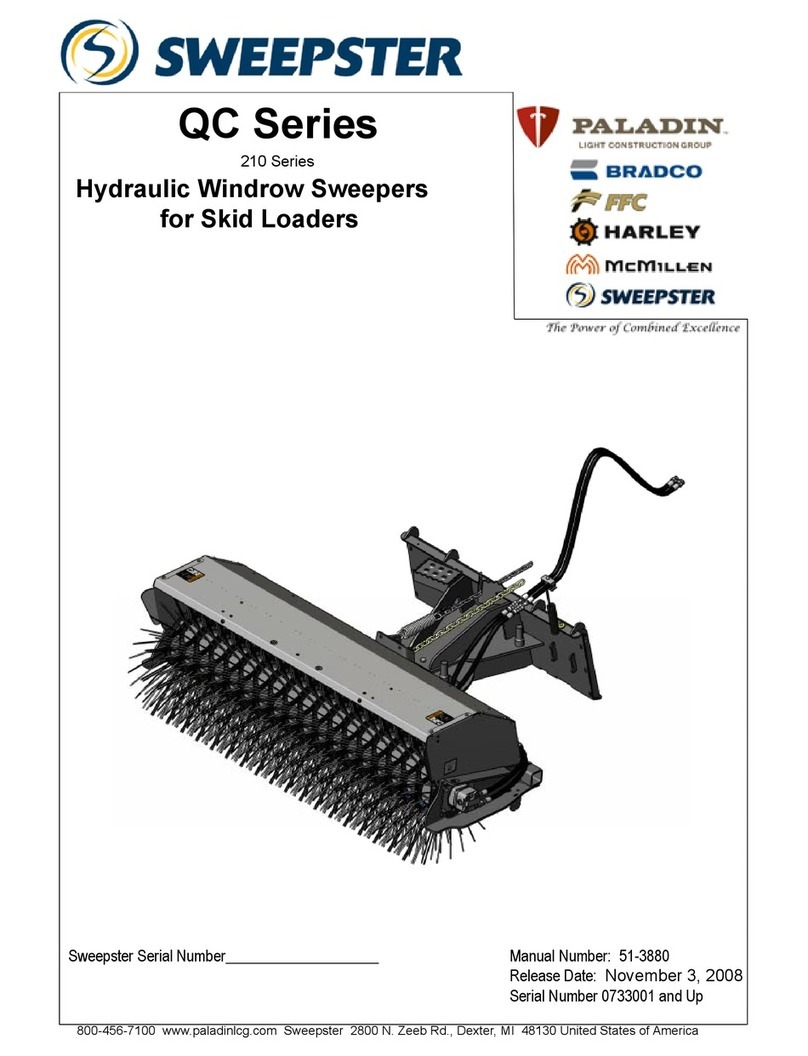
Sweepster
Sweepster QC 210 Series manual
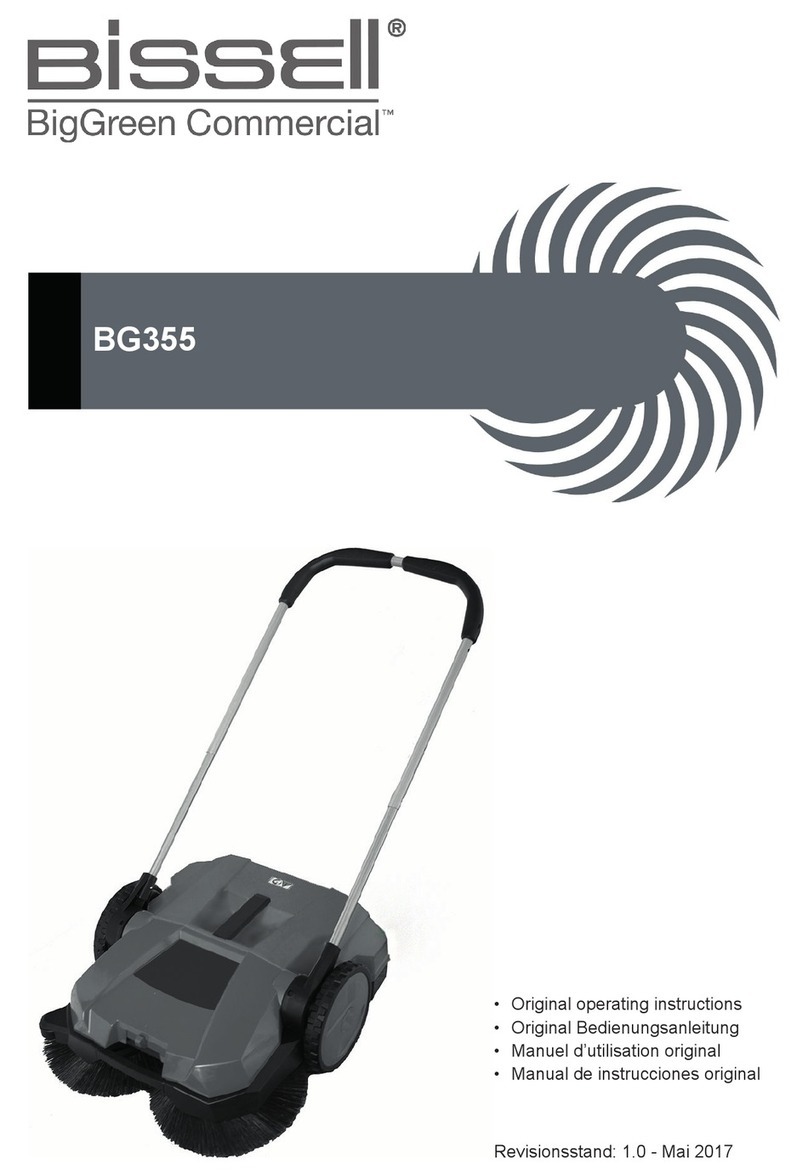
Bissell
Bissell BigGreen Commercial BG355 Original operating instructions
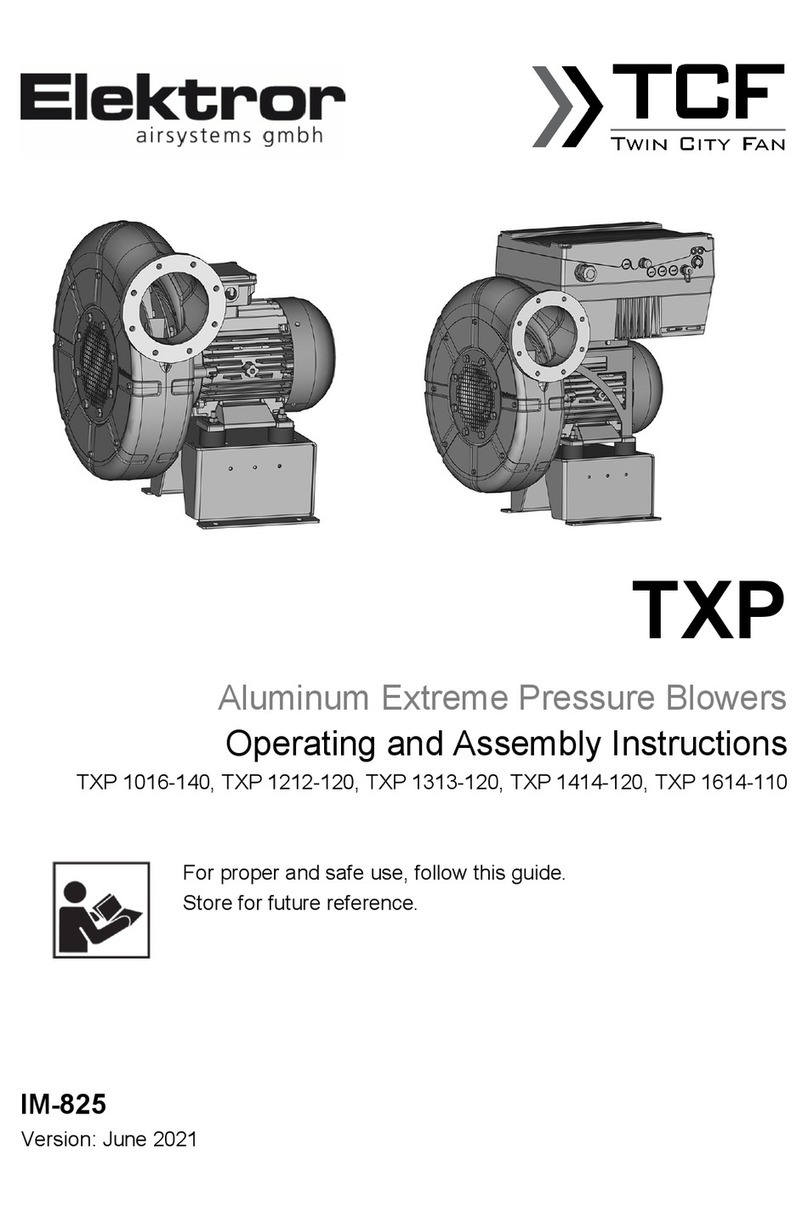
Elektror
Elektror TXP 1016-140 Operating and assembly instructions

Kärcher
Kärcher KM 85/50 R Bp Original instructions

